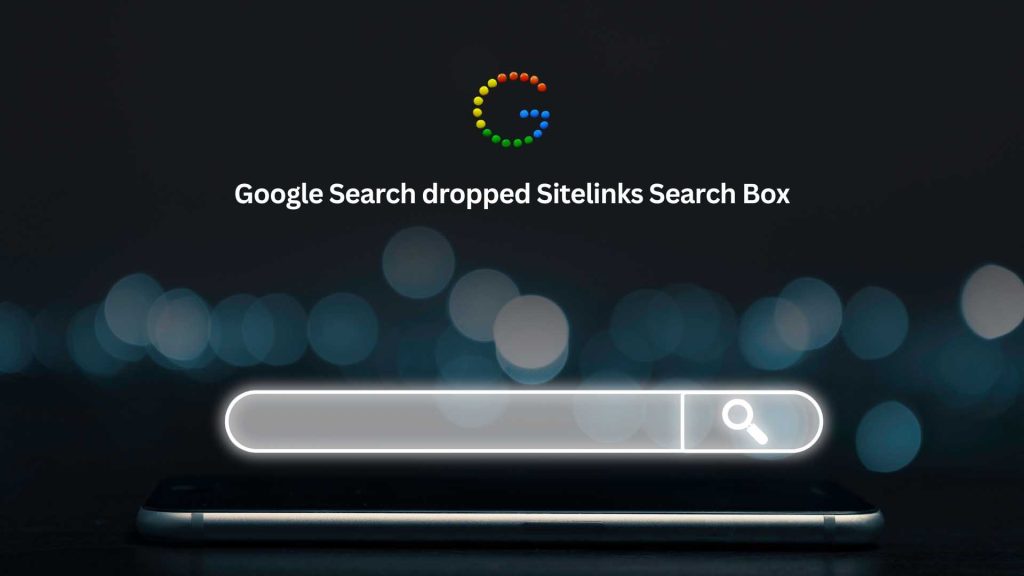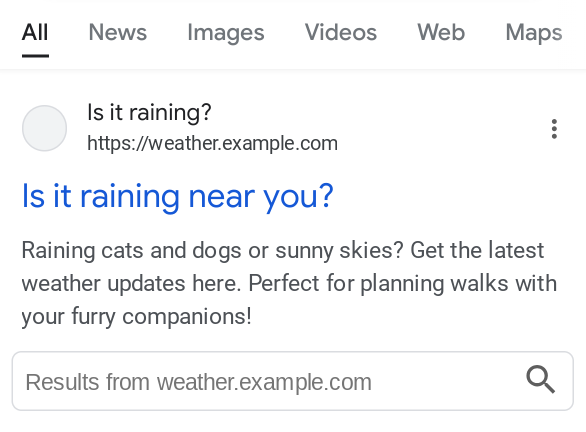In a recent update that will reshape how users interact with search results, Google announced that it removed the Sitelinks Search Box from its search engine results pages (SERPs) from November 21, 2024. This change marks a significant shift in how website owners, SEO experts, and digital marketers approach their SEO strategies.
If your website heavily relies on sitelinks or you’ve been leveraging this feature for enhanced visibility in search results, here’s what you need to know about the upcoming changes and how to adapt.
What Is the Sitelinks Search Box?
The Sitelinks Search Box is a feature introduced by Google that allows users to search within a specific website directly from the main search engine results page (SERP). When a user performs a branded search, Google sometimes shows a search box below the main result, enabling visitors to conduct further searches without leaving Google.
This feature has been particularly useful for large websites with extensive content, such as e-commerce stores, news sites, and blogs, allowing users to find more specific pages or products directly from the SERP. It also gave webmasters an additional opportunity to enhance their site’s user experience and visibility.
Why Is Google Removed the Sitelinks Search Box?
Google has not provided extensive details on why the Sitelinks Search Box is being removed, but there are a few potential reasons for this shift:
1. User Behavior: Over time, Google has noticed changes in how users interact with search results. Many users are now accustomed to searching directly from Google’s main search bar rather than using internal search boxes for specific sites.
2. Mobile Experience: The increasing emphasis on mobile-first indexing and mobile usability could be another factor. The Sitelinks Search Box may not have offered the best user experience on smaller screens.
3. Streamlining Search Results: Google constantly aims to simplify its interface while offering richer snippets and features like FAQs, reviews, and knowledge panels. Removing the Sitelinks Search Box could be part of an effort to streamline how results are displayed, focusing on features that offer the most value to users.
What This Means for SEOs and Webmasters
The removal of the Sitelinks Search Box brings both challenges and opportunities for webmasters and SEO professionals. Here’s what you should consider:
1. Focus on Internal Site Search
Without the Sitelinks Search Box, users will no longer be able to perform searches for internal pages directly from the SERPs. This means that your website’s internal search functionality will play an even more critical role in helping users navigate your site. Here are a few steps to improve internal site search:
– Optimize your internal search functionality: Ensure your website’s internal search is easy to find and user-friendly. Analyze search data to understand how users navigate your site.
– Improve search indexing: Ensure that Google indexes your internal search results correctly by using best practices for schema markup and search result pages.
2. Refine Structured Data and Schema Markup
With the Sitelinks Search Box gone, websites need to lean more heavily on other structured data opportunities. Structured data helps search engines better understand your site’s content, which can lead to richer search results such as featured snippets, FAQs, and product listings.
– Implement schema markup: Continue using structured data like schema.org to enhance your website’s visibility in Google’s SERPs. This is especially important for e-commerce sites, reviews, recipes, and local businesses.
– Optimize for sitelinks: Although the Sitelinks Search Box is being removed, sitelinks themselves are still valuable. Google automatically generates sitelinks based on your site’s structure and content, so ensure that your site is well-organized and easy to navigate.
3. Enhance Branded Search Performance
Branded searches—searches for specific companies, products, or domains—will continue to be important. Even without the Sitelinks Search Box, users looking for specific information related to your brand may still find value in sitelinks and the information your meta tags provide.
– Optimize your branded search strategy: Ensure your brand’s presence is clear in meta titles, descriptions, and URL structures. This will help guide users to relevant content even without the Sitelinks Search Box.
– Leverage Google’s other features: Focus on other SERP features that help your brand stand out, such as Google Business Profile, FAQ snippets, and product-rich snippets.
Preparing for the Change: Key Takeaways
As Google removes the Sitelinks Search Box from its search results on November 21, 2024, here are the steps you should take to prepare:
1. Optimize your website’s internal search to improve user experience and help visitors find what they need once they land on your site.
2. Ensure proper schema markup implementation across your site to enhance visibility for other SERP features and rich results.
3. Prioritize user-friendly navigation and site structure to make it easier for Google to generate useful sitelinks for your brand in the absence of the search box.
4. Focus on branded search optimization and leverage other search features like local business results, product listings, and FAQs.
While the removal of the Sitelinks Search Box may seem like a setback, it’s ultimately an opportunity to refocus on key SEO best practices that will continue to drive traffic and improve user engagement.
—
Final Thoughts
Google’s decision to remove the Sitelinks Search Box is part of its ongoing mission to simplify and enhance the search experience for users. Although this feature will no longer be available, it’s essential to remember that SEO is constantly evolving, and adapting to these changes is critical for maintaining visibility and traffic.
By focusing on internal search optimization, structured data, and branded search strategies, webmasters and SEO professionals can continue to thrive in the ever-changing search landscape. As always, staying ahead of updates and optimizing your site accordingly will ensure long-term success in organic search performance.







